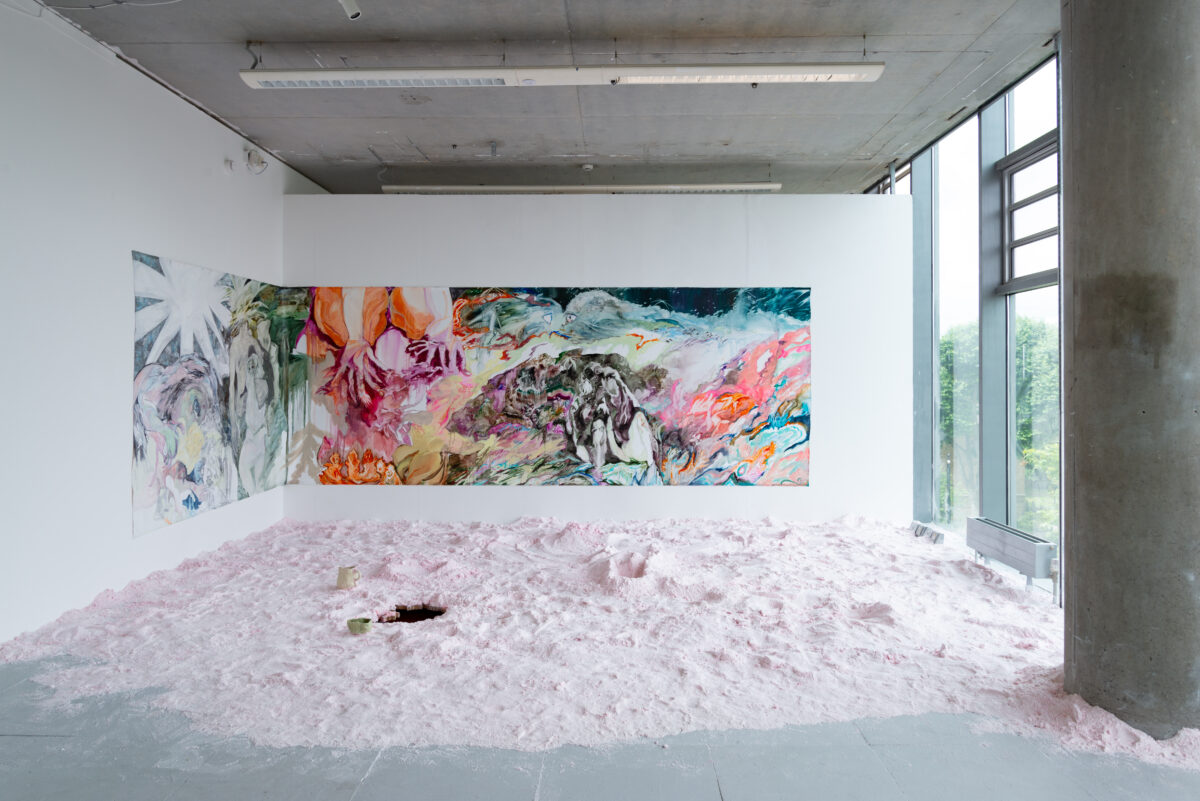At first glance, K-Art Now 2025: The First Movement could almost be
mistaken for a modest experiment: a one-day pop-up in a small Fulham
gallery, four artists, a few hours of live work. But step inside 56 DR
Gallery and its ambition becomes clear. This is not an exhibition in
the conventional sense; it is a proposition that art might matter most
not when it is fixed in place, but when it is in motion.
Curated by Hyeryoung Jun and presented by 4482[SASAPARI], the show
blurs the long-policed line between performance and installation.
Rather than positioning one as fleeting spectacle and the other as
static display, it treats both as porous, unstable, and inseparable.
Audiences move between live actions, material remnants, props,
costumes, video, and documentation — never certain whether they are
witnessing the work itself or the traces it leaves behind.
The four artists — Dohyun Baek, Donna Kim, Soo Hyun Lee, and Dohee
Park — lean into this sense of uncertainty. Their practices unfold in
the overlaps: between gesture and residue, between presence and
memory. A costume becomes not just a tool for performance but an
installation in its own right. A photograph does not so much record an
action as extend its half-life. Each work resists the neat closure of
the exhibition frame, asking us instead to notice how art leaks beyond
its allotted time.
This refusal is what gives The First Movement its quiet charge. Many
exhibitions seek to dazzle with resolution — the final object, the
finished form, the “statement.” Here, nothing resolves. Instead, the
gallery becomes a kind of living archive, a place where instability
itself is generative. The works unfold and dissolve almost
simultaneously, reminding us that the most powerful experiences may be
the least permanent.
There is also a cultural dimension worth noting. By staging this
project in London, 4482[SASAPARI] situates emerging South Korean
artists within a wider conversation about experimental practice and
visibility. It asks how ephemeral forms — often undervalued in global
art economies obsessed with permanence and saleability — might be
recognised not as marginal but as central. In this sense, the show is
both an experiment and a critique: it proposes another way of seeing,
valuing, and remembering art.
For all its brevity, The First Movement lingers. It does not
overwhelm; it unsettles. It asks us to hold on to a gesture even as it
slips away, to attend to the fragile interval where presence becomes
memory. That this can happen in the span of a single day, in a small
space on Dawes Road, is a reminder that art’s endurance is not always
measured in objects but in the traces it leaves behind.
Image top – I Have Seen This Coming, 2024 by exhibited artist Soo Hyun Lee

